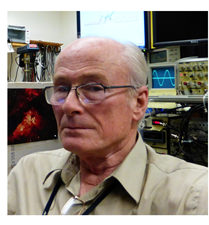
James F. Woodward
California State University Fullerton, USA
Title: At the cutting edge, or beyond the fringe: Does physics allow rapid spacetime transport?
Biography
Biography: James F. Woodward
Abstract
For much of the past century a small group of people, never more than a dozen or two until the late 1990s, have pursued schemes that, if successful, would revolutionize how we get around spacetime. After World War II, public attention was focused on spaceflight both by flying saucer crazes and by rocketry. The military end of rocketry was ICBMs. Their civilian counterpart was first the Apollo program and then the Space Shuttle. But almost none of the legions of people involved with either ro9cketry or flying saucers devoted serious effort to trying to solve the propulsion problem. The dozen or two who did found themselves isolated and shunned by mainstream scientists. But allthat changed when Kip Thorne and several graduate students ushered in the era of wormhole physics in 1988 by reverse engineering, at Carl Sagan’s request, the needed conditions to travel to and from the center of the Galaxy 26,000 lightyears distant in little or no time. The requirement turned out to be “wormholes”, spacetime structures predicted by general relativity theory. Six years later, Miguel Alcubierre constructed the “warp drive” “metric” of general relativity that shows what is needed to zip around spacetime, seemingly at speeds faster than the speed of light. The requirement is a Jupiter mass of negative rest mass (“exotic”) matter. This requirement is seemingly so preposterous that almost no one has worked solving how to make wormholes and warp drives. But a fair number of people have worked at less ambitious goals. In this talk I will relate how the work of people known to me has movedus closer to the goal of rapid spacetime transport.

